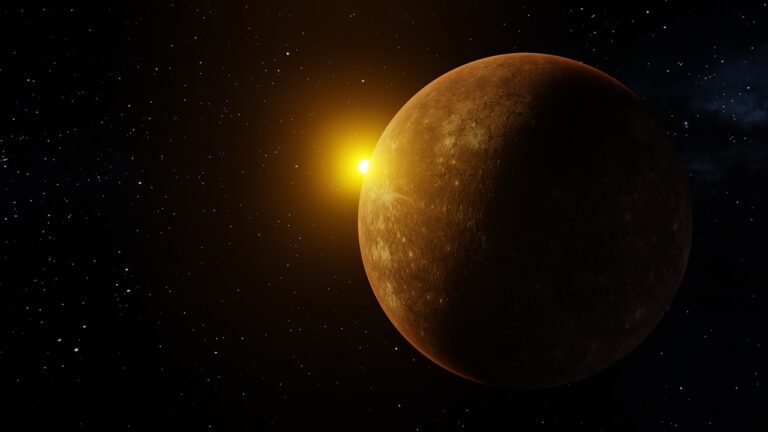Scientists have discovered deposits of salts on Mercury that resemble glaciers. They consist of volatile substances.
Should we reconsider Mercury’s geological history? A new study suggests that the planet may once have presented certain conditions for habitability.
Should we reassess Mercury’s geological history? Indications from a recent study propose that the planet might have once supported conditions conducive to habitability, evident in the presence of expansive salt glaciers concealed beneath its harsh exterior.
When contemplating the potential for life on Mercury, the prevailing notion is one of outright dismissal. Positioned a mere 46 million kilometers from the Sun, this diminutive, desolate planet, lacking a substantial atmosphere, is excessively heated by the star, seemingly incapable of providing the essential conditions for life to thrive. Yet, when delving beneath the surface, a markedly different scenario emerges, as indicated by the outcomes of a recent study featured in The Planetary Science Journal. These fresh insights challenge our comprehension of habitable zones within planetary systems, significantly broadening the scope of possibilities in astrobiology.
Glaciers of Salts Releasing Volatile Elements

Mercury’s position beyond the habitable zone, which, in our Solar System, falls between Venus and Mars, exposes it to extreme temperatures exceeding 400°C in direct sunlight, eliminating the possibility of liquid water. Despite this harsh surface environment, recent discoveries have challenged the notion that planets must conform to conventional habitable zone criteria to harbor conditions conducive to life, as seen in the concealed oceans on the icy moons of Jupiter and Saturn. Unlike these moons, Mercury, characterized by a substantial iron core and a thin silicate envelope, lacks liquid water oceans. So, where do scientists identify potentially life-sustaining conditions?
In salt glaciers! Contrary to previous assumptions that Mercury’s crust lacked volatile components, data from the Messenger probe’s mission, conducted between 2011 and 2015, disrupted this certainty. The planet’s surface revealed the presence of sulfur, chlorine, sodium, and potassium, indicating volatile elements emerging from the subsurface and suggesting the existence of a concealed “reservoir” beneath Mercury’s surface.
A More Favorable Environment for Life in Mercury’s Subsurface?
The recent study unveils that the prevalence of volatile elements may be more extensive than previously estimated. The findings suggest that emissions of volatile elements are particularly pronounced in regions with highly chaotic terrain, mirroring the morphological features of glaciers on Mars. Examination of these terrains, particularly at the poles, indicates that they constitute extensive salt deposits that captured volatile elements during their formation. Buried beneath Mercury’s surface for over a billion years, these specific glaciers would have been exposed due to asteroid impacts.
Comparable terrestrial analogs to these glaciers exist, such as the saline and arid deposits in Chile’s Atacama Desert. We understand that such environments can serve as niches with favorable habitability conditions for extremophile organisms.
New Perspectives in Astrobiology

Based on modeling, researchers propose that these glaciers took shape during the collapse of a transient, warm primordial atmosphere at the onset of Mercury’s history, predating the Late Heavy Bombardment episode. Water, released by volcanic activity, would have condensed on the surface during the planet’s prolonged and frigid nocturnal periods, influenced by its slow rotation. This scenario suggests the temporary existence, around 4 billion years ago, of shallow and highly saline seas. The subsequent rapid evaporation and the loss of water into space would have resulted in the formation of these extensive salt deposits within the crust.
This newly proposed geological history adds allure to Mercury and its analogs elsewhere in the Galaxy in the quest for extraterrestrial life.
Do not forget to share your opinion with us to provide you with the best posts !




0 Comments